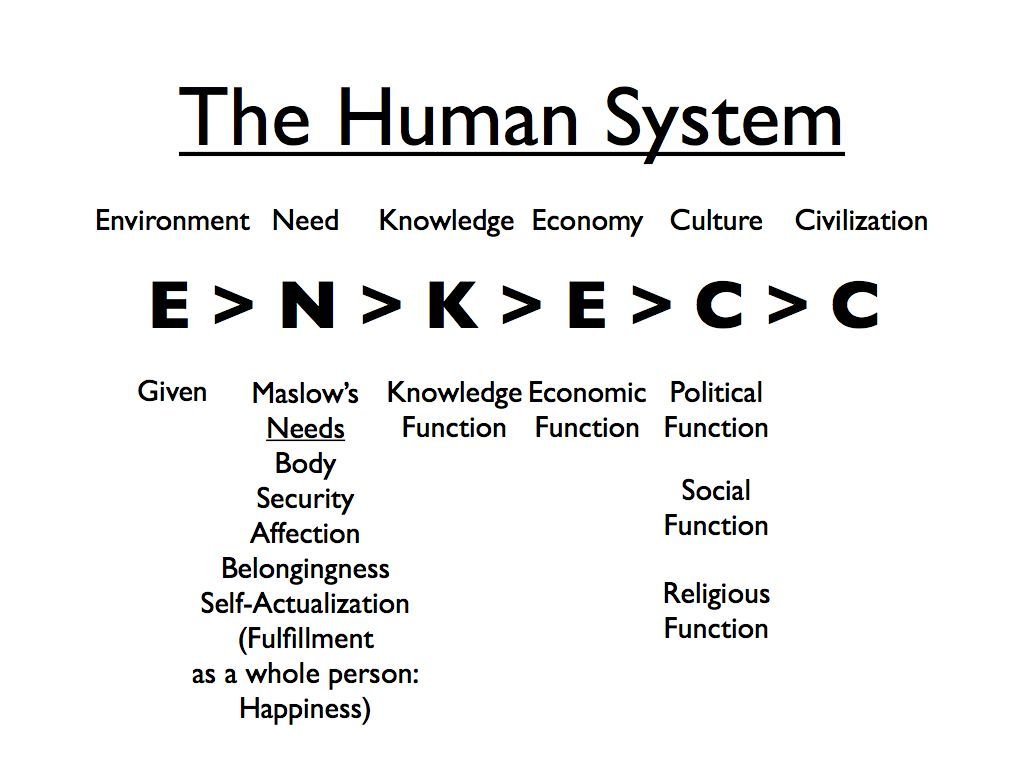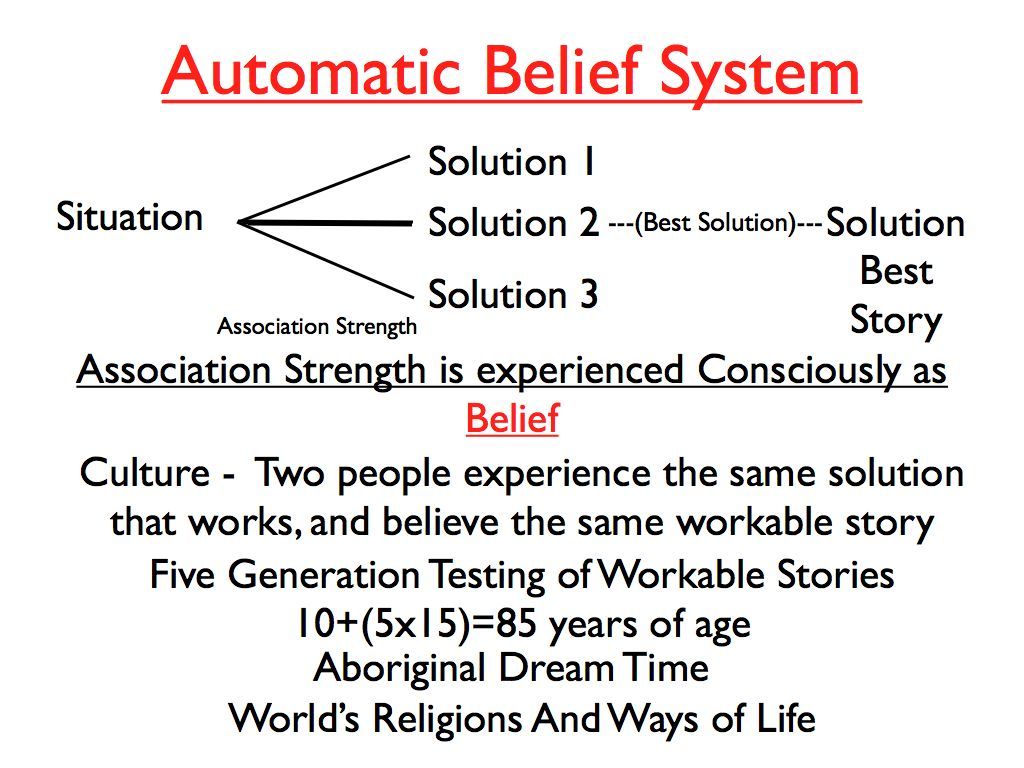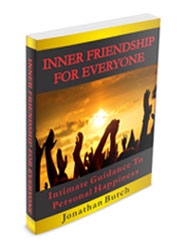Chapter 1. The Human Way
We live in a new global environment
of seven billion humans and our
new machines connected together into one
global marketplace and one global community.
Humans have never experienced this before.
Now what do we do?

10:00 AM - August 14, 2014 by Jonathan Burch
All plants and animals have evolved a way to adapt to their environment, even when the environment changes. When the environment changes so it won’t support them any more, some species move to a different, more supportive environment, such as migratory birds with the change of the seasons.
Bees have a system for adapting to a new environment. They find a patch of flowers with good pollen for making honey, then build a hive in a nearby tree, create a queen with royal jelly for reproduction, and live according to their hardwired instincts.
There are different kinds of environmental changers which can occur. There can be physical changes, such as a change in climate, an earthquake, drought or flood. There can also be changes in the species, such as evolving wings or developing new knowledge.
For example, suppose the bess in a successful hive with a nearby patch of flowers beneath their tree, discover how to dance. With their dance they can describe direction and distance from the hive. Now they can send out scouts to find new patches of good flowers. The scout can return to the hive and dance out the message of how to get to the new patch of flowers. Now the bees have a much larger source of food. The hive grows bigger, and the bees become more numerous, stronger, better able to defend the hive and are more survivable.
The bess that know how to dance survive better than those who do not. The dance genes become typical in the resulting generations of bees. This is how knowledge can change the environment of the group.
Humans can dance. Humans and our ancestors lived in hunter-gatherer economies for thousands of years. Then we learned how to dance to a new tune. We developed the knowledge of how to domesticate plants and animals. This allowed us to grow plentiful food while living in one place, in concentrated cities, where we could develop much more new knowledge, and use that new knowledge to create a new kind of economy based on mass human labor controlled by a few elite managers at the top of a vertical society of classes, and a new civilization to make it all work for humans in that new agricultural and trade environment.
Now humans have learned how to dance to a new tune - the hum and whir of machines. In the last 200 years humans have created new knowledge of how to create machines to extend human senses (microscopes, telescopes), human reach (tools, skyscrapers, cars, trains, boats and space ships), human grasp (control of some of nature and the environment), human thinking (computers) and human memory (machine storage and retrieval of knowledge).
All this has allowed humans to connect themselves together all around the Earth by the machines, such as the Internet and overseas transportation, into one global marketplace and one global community, of billions of human creators and consumers, which is moving at a faster pace than humans have ever experienced before, faster than human managers can understand. The old systems do not work any more. What do we do now?
How do humans adapt to a new environment. What is the human system which we have evolved?
Unlike most other species, humans can adapt to many different kinds of environments. What is the system that humans have evolved for adapting to a new kind of environment, such as the new global environment of life plus machines?
The human system is called E>N>K>E>C>C, pronounced “Enkek”. It stands for Environment, Need, Knowledge, Economy, Culture and Civilization. The arrows indicate that each stage drives and determines all the stages that come after it. Here is a diagram of how it works:

In a supportive Environment where humans are, the humans have Needs. There are raw materials in the supportive environment which can meet the humans needs, such as berries in the fields and wild animals for meat. However, the raw materials are not in human usable form. Humans must first have the Knowledge of how to convert them into human usable form. Then the humans need to do the work of actually converting them and using them to meet the human needs. This is called the Economy. The Culture organizes and motivates the humans to work in the economy. Then the short-sighted rules of culture are polished into the long-lasting rules of a Civilization, which lasts for many generations.
For example in a supportive environment where humans are, the humans have the need for food to survive and flourish. The environment has food in it, the berries and animals, but the humans do not have them in hand. Humans learn how to go out into the field, pick the berries that are healthy to eat, capture and kill the food animals, and bring them back to the center of the group so all can eat. This is having the knowledge of how to survive with a hunter-gatherer economy. Then actually doing it, hunting and gathering, is the economy of the group.
Who would bother to do all this work? Why not just eat enough for yourself and rest and play all day? If that happens the group will not survive. This is why we have culture.
It is the job of culture to organize and motivate the humans in the group to do the jobs of the economy. Having the knowledge of how to do it is not enough. The jobs have to be efficiently divided up into specialization, and the people organized and motivated to do the jobs of the economy so the human group can survive, flourish and reproduce.
However, even that is not enough. A new culture is often short-sighted. A culture may teach its people to eat all its corn when ever it has the opportunity. If it does, the people will eat their seed corn and next year have nothing to plant, or eat. They will starve and become extinct.
The shortsighted rules of a new culture, must be modified into the long-lasting rules of a civilization. This is the job of the elderly over many generations, to produce the workable responses for a viable civilization to last a long time in the environment. How do the elderly determine what works in a stable environment generation after generation?
Peter Berger, a sociologist, answered this in his book Sacred Canopy. He said it was a there-step process, externalization, objectification and internalization. It begins when artists in a new human environment have new feelings and experiences. Then they use their artistic expression to give them external form, such as new words or images. This is where the new words and images come from that allow the humans to think about the new experience. This is externalization of the humans experiences and feelings in a new environment. The result is new words and images with which the people can think about and make decisions about how to respond adaptively in the new environment.
Then objectification occurs when these new words or images are published to the society, which gives new meaning to them to show people how to respond to the new experience. Then they become the society’s words or images that carry the society’s meaning for them. They have been objectified.
Then people learn these new social norms, find them believable and internalize them as true. Then the people discipline themselves to live by these new rules which they believe are true. This is internalization.
An example of how this process begins is the photograph taken early one morning of the first atomic bomb blast. The mushroom cloud in the image became the symbol of the Atomic Age. In another recent externalization, the words “Rock and Roll” characterized a period of American music and social ferment.
The internal discipline at the end of the process makes the society work. Now the new society has new stories in its new environment. These are the right stories which work to show the humans how to respond adaptively to survive, flourish and reproduce indefinitely generation after generation, in this environment until the environment drastically changes. Then new “right” stories will be needed.
This is all well and good, but how do humans know they have the right story? How do they know what is the right story in a new environment?
Fortunately nature provided a workable answer for this long ago, before humans could think about it, talk about it or write about it. The system uses evolved human instinct.
The system for human society finding and using the right stories is called the Automatic Belief System. This system was discovered in the course of developing a theory of human personality as a decision system which evolved from one-celled animals to modern humans.
The Automatic Belief System works by trial and error and memory of what works. It uses a connection between neurons in the brain. The connection can have varying strengths chemical/electrical signals between the two neurons. This called the strength of association between the two.
The brain makes a mental picture of a typical situation which poses an adaptive problem, either an opportunity, such as getting food, or an obstacle, such as a predator. Then the brain makes a mental picture of several different solutions to the problem. When the individual tries a solution the brain makes a mental picture of the result.
If the solution worked to solve the problem, some association strength is added to the neurons connecting the situation to the solution. If that solution did not work some association strength is subtracted from the neuronal connection between the situation and that solution. After several trials with each solution, the path to each solution has a certain strength associating the situation to the solution, depending on how well it worked. When the situation is encountered again the brain activates the path with the most association strength which quickly launches the best, most workable solution.
Here is a diagram of how the Automatic Belief System works:

The “Best Solution” path is the path to the solution that has worked the best in the past. It has the most association strength. This is how the brain makes an adaptive response quickly in adaptive time. It is a pretty, simple and good system that has worked for many species for many millions of years, including eventually modern humans.
The Automatic Belief System is automatic because nature did not see fit to give us conscious control over these adaptive decisions. Perhaps it evolved before consciousness.
Besides if we consciously decided what was best for us in the actual, real world, we would probably make many bad mistakes based on prejudice and whim. Nature avoided that. We have been the beneficiaries of nature’s system, since we have survived, flourished and reproduced in many different environments.
Actually this ABS system, as humans use it, is part of what allows us to adapt to many different environments, unlike most other animals. When we encounter a new environment, we make a new system with a new set of “right”, workable stories to respond in the new environment adaptively.
It is a story because it has a beginning (the situation), a middle (the solution) and an end (the result), which occur over time. The brain makes a mental picture of the stages of this story, evaluates which story is most successful and chooses that story when the situation occurs again.
It is called a belief system, because association strength in the brain is experienced by the person as belief. Since it is automatic and functions in the unconscious, we do not have conscious awareness of, or control over, the origin of our beliefs. It seems as though they just happen to us. We can lose a cherished belief, such as the belief in Santa Claus, or gain a hated belief, such as that Hitler will take over the world. The belief is unwanted consciously, but it seems to be true. It just happened to us, even though we did not want it consciously. Its origin was unconscious and automatic.
The Automatic Belief System, or ABS, is also the source of human culture. Suppose two people living in the same environment encounter a typical situation. Each tries out different solutions. Eventually one solution works best in that environment. Each person’s ABS gives most association strength to that solution and it is believable to both people.
They talk together about the problem, agree on words and images to describe it and agree on the solution as the right thing to do. Now this solution has become the right story for how to respond in their environment in this two-member culture.
Suppose a third person joins them. They tell the new person, who has never experienced the situation in this environment, what to do if it happens. They tell him their cultural story, their right story for the situation that works in this environment.
He later encounters the situation in the environment, remembers the story and responds that way. It works, so his ABS adds association strength between the situation and this solution. He believes the story is true. Next time he encounters the situation, he is sure to discipline himself to do this solution, because he believes it is the right thing to do.
Now suppose the tribe grows and a person lives to be 85 years old. Beginning when he was 10 years old he has seen five generations (a new generation every 15 years) use this story successfully in this environment. His ABS is working all the time.
\
As an old man, he only remembers the stories that have worked all this time, that are still true, according to his ABS. By this system these stories are verified by his ABS over five generations. If he tells a ten year old girl these stories, and she lives to be 85 in that same environment, then the stories have been tested by his and her ABS’s over ten generations.
This multi-generational testing system results in a culture that only has stories that work over many generations. These are the cultural stories that are polished by generations of experience in the environment into the long-lasting stories of a successful civilization. No one in the current generation knows where the stories originated. They seem to have been given to the tribe way in the past. “It has always been that way.”
This is the source of the Aboriginal Dreamtime, the worldview or religion that leads the Aboriginal people in Australia to survive, flourish and reproduce in the outback. This is the source of all human culture and human religion.
Whether religion is from natural sources or supernatural sources depends on whether the initial stories are from the minds of human artists or are the result of revelation from supernatural sources to the human artists or prophets to get the process of culture started. We have learned that we cannot prove anything for certain, so we cannot answer that question. We each can only live with what is real and believable to us, what our individual ABS gives us, and live with others as they live with what is real and believable to them.
That is how it works for humans in a stable environment, but what happens when the environment drastically changes? The humans need a new system, a new culture, to develop a new way to live to adapt to the new environment. The new way to live is called a civilization. Adapting is normal and natural.
This is how the human system works. A new civilization is the product of the human system for adapting to a new environment. What is our new global environment?

 You were Born To Be Happy
You were Born To Be Happy How To Be Happy
How To Be Happy Happiness Comes From Relationships
Happiness Comes From Relationships Happiness Is For Everyone At Any Age
Happiness Is For Everyone At Any Age